The Best pH For Your Cannabis Plant

There are a number of important factors that go into growing a cannabis plant. Air temperature, soil temperature, humidity and light all have a huge impact on a cannabis plant’s healthy development. However, even if all these conditions are perfect, there’s one variable that affects a plant more than any other – potential hydrogen, commonly known as “pH.” This plays a crucial role in how plants uptake their nutrients. If a grower can’t dial in the pH for their weed, their plants won’t make it to harvest day.
What Exactly Is pH Value?
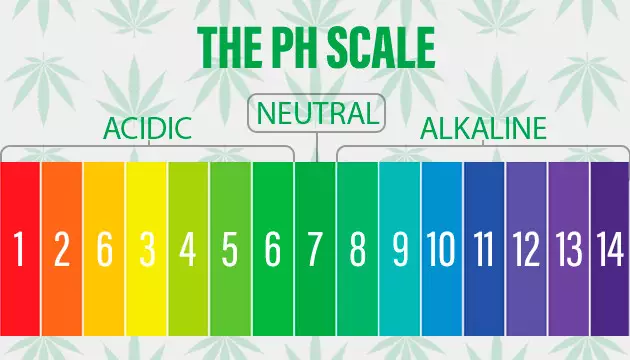
Essentially, pH is a 14-point scale that measures the alkalinity or acidity of a solution. The pH of distilled water is 7 – dead center in the pH scale. If a solution is more acidic, it’ll have a lower pH value ranging from 1 to 6. Lime juice and vinegar are common acids. The opposite is also true: if a solution has a higher pH, ranging from 8 to 14, it’s a basic alkaline. Milk and bleach are two examples of alkaline solutions. pH is a logarithmic scale – meaning that a solution with a pH of 5 is ten times more acidic than one with a pH of 6 – and it plays an important role in several functions essential to life on earth, including how plants eat.
Why pH Is So Important
The three main macronutrients – nitrogen, phosphorus, and potassium – are essential building blocks for any plant. But if the pH level of your cannabis plant’s growing medium (soil or hydroponic) is too high or too low, the plant won’t be able to absorb these nutrients.
When that happens, your plant enters a state called nutrient lockout – a condition where nutrients are present but unavailable. Without access to these crucial elements, even a healthy plant can quickly become weak, wilted, and stunted. In the short term, growth will slow or stop entirely. If the pH problem isn’t fixed in time, the plant can eventually starve to death.
That’s why it’s critical for every grower to understand the connection between pH and nutrient uptake. Even if your nutrients are perfect, your plant won’t thrive unless your pH is in the right range.
What’s The Ideal pH Value For Cannabis?
When a grower cultivates any plant (including cannabis), it’s best to mimic the types of conditions that the plant would enjoy in nature. In the places where cannabis grows in the wild, the soil is slightly acidic. However, there’s no “magic number” when it comes to the best pH for weed. Instead, the best pH for cannabis plants will depend on several factors, including growing medium.
Best pH For Soil: Keeping It Within 6.0 – 7.0
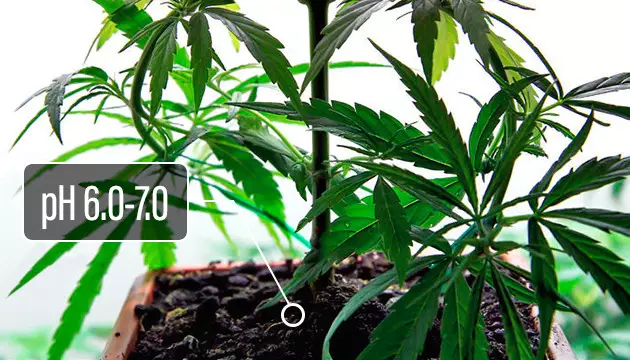
The best soil pH for cannabis plants is between 6.0 and 7.0. Soil is significantly more forgiving than hydroponic media, and because of this, a plant’s pH can deviate slightly when planted in soil. For instance, if a grower feeds their plant a nutrient mix with a pH of 6.3 one day and 6.7 the next, they probably won’t notice any difference in their plants. Drifting pH like this can actually be beneficial to a cannabis plant, because weed absorbs different nutrients at different pH levels. However, once a plant’s pH begins to drift outside of the 6.0 to 7.0 range, a grower may start noticing some problems with their plants like droopiness, dryness or change of color.
Best pH For Hydroponics: A Goal Of 5.5 – 6.5
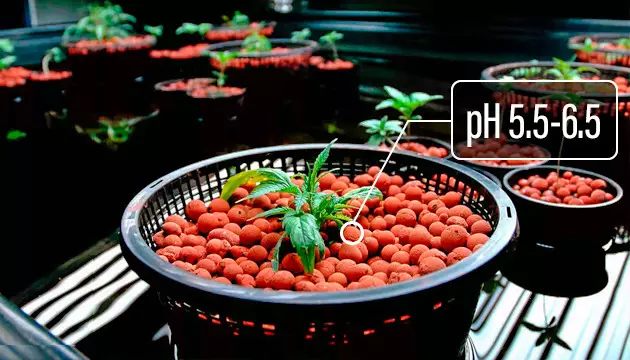
When growing in a hydroponic medium, the correct pH for cannabis is between 5.5 and 6.5 – slightly lower than in soil-based gardens, because hydro starts with pure water – free of any nutrients as compared to soil. Additionally, in a hydroponic garden, a grower applies their nutrients directly to the roots. Because of this, the pH issues in hydroponic gardens can damage a plant’s health extremely quickly. However, it’s still important to make sure that pH fluctuates slightly in a hydroponic garden. Because plants absorb different nutrients at different pH levels, growers should make sure that their pH isn’t always the same, although still of course within a safe range.
Ways To Accurately Measure pH
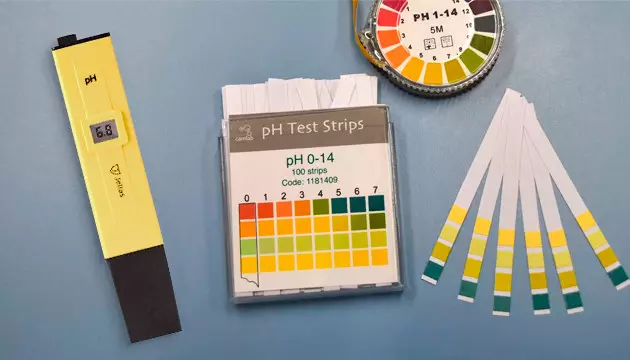
Because pH regulation is so important to successful cannabis growing, it’s essential to measure it accurately. That’s why every grower should have a reliable pH testing kit on hand.
There are several types of pH kits to choose from – including test strips, dropper kits, and digital pH meters. Each has its pros and cons, and growers often have different opinions on which is best. For example, digital pH meters are highly accurate and easy to use, but they require regular calibration and care.
There are two key pH levels that growers should monitor:
The pH of the nutrient solution, to make sure it's suitable for the growing medium.
The pH of the soil or grow medium itself, to ensure proper nutrient uptake.
Some advanced digital meters can test both liquid and solid media, offering added convenience. On the other hand, pH strips and dropper kits are low-maintenance and budget-friendly, but they’re generally less accurate and more prone to user error.
How Often Do I Measure pH?
Every grower should check their pH every time they make a nutrient mix to feed their plants. One of the most important rules for cannabis growing is to always check the pH balance before feeding. If the pH of the medium is too high or too low, the grower can adjust the pH of their mix to fix it.
When pH Is All Wrong: The Symptoms
If you’re wondering whether the pH of your plants is too high or too low, don’t worry – they’ll tell you. When a plant’s pH is incorrect, it can result in stunted, gnarled plants that fail to develop. These plants will be more susceptible to nutrient deficiencies and other health issues. Come harvest time, pH imbalances have a significant effect on a grower’s final crop.
When pH Is Too High
When the pH of a plant is too high, that plant won’t be able to absorb iron and other nutrients. Often, a plant will show certain signs of deficiency. An astute grower may notice that their plant appears to be lacking in one of these nutrients – when leaves turn dark green, claw-looking and droopy – and make up for this discrepancy by adding more of that nutrient to the plant. However, simply adding more nutrients won’t fix the grower’s problem. That’s because regardless of how much of the nutrient the plant has access to, it won’t absorb this without the right pH levels. Instead, the grower needs to address the real problem – the pH imbalance.
When pH Is Too Low
If a plant’s pH is too low, it won’t be able to absorb nutrients like phosphorus, calcium and molybdenum. Phosphorus is crucial for bud development in a weed plant’s flower cycle. The plant’s leaves will appear droopy and develop tan, brown and yellow spots along its edges. Leaves may also take on a mottled brown and yellow complexion from calcium deficiency. These deficiencies can cripple a plant as it ages. However, if a grower catches them early, they can correct the pH problem and their plants will be able to recover.
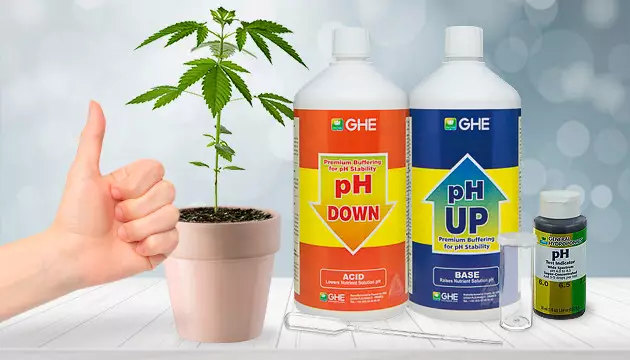
How To Lower pH
To lower the pH of a grower’s medium when it’s too high, they’ll need to use one of two different approaches depending on the medium they’re using. Most experienced growers know how to lower the pH of the water in their hydroponic weed garden: by giving their cannabis something acidic. Common products like pH Down and acid-based fertilizers can lower the pH of a hydroponic grow. For soil grows, pH Down solutions, acid water and iron drenches can help lower the pH of a medium. However, it’s important to note that iron is also a cannabis micronutrient, so it’s important for a grower to be conservative if they want to lower their pH using iron.
How To Raise pH
Additionally, a grower needs to know how to raise pH in soil for their weed plants. To do that, they can use high-pH fertilizers, flowable lime or hydrated lime. These products all help to boost the pH in a medium and allow the plants to absorb nutrients again. Hydroponic growers can also use these tools in addition to products like pH-Up and potassium bicarbonate. However, similar to iron drenches, potassium is itself a nutrient. Therefore, growers need to make sure they’re not giving their plants too much of it when using potassium bicarbonate to raise the pH of a plant.
Wrapping Things Up
Now that you’ve learned the basics of pH control, you can apply these rules to your own grow. Mastering pH is a crucial step for any grower who wants to grow bomb weed. With enough knowledge and practice, you’ll get used to adjusting the pH of your cannabis plants for maximum efficiency. That way, you can ensure that you get high-quality, high-yielding harvests every time!
Herbies Head Shop expressly refuses to support the use, production, or supply of illegal substances. For more details read our Legal Disclaimer.



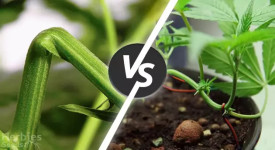

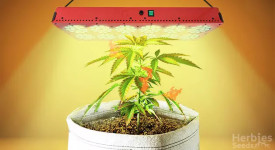

Thank you for leaving a comment for us!
Your feedback will be posted shortly after our moderator checks it.
Please note that we don’t publish reviews that: